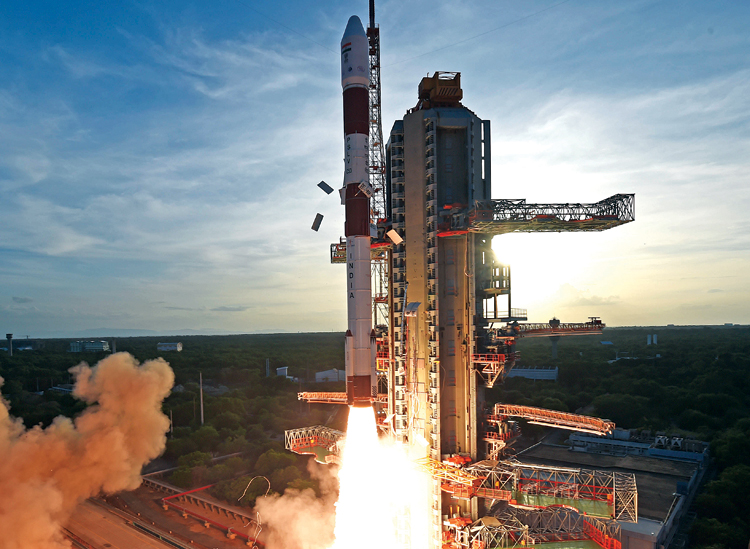INDIAN ARMED FORCES CHIEFS ON OUR RELENTLESS AND FOCUSED PUBLISHING EFFORTS

The insightful articles, inspiring narrations and analytical perspectives presented by the Editorial Team, establish an alluring connect with the reader. My compliments and best wishes to SP Guide Publications.

"Over the past 60 years, the growth of SP Guide Publications has mirrored the rising stature of Indian Navy. Its well-researched and informative magazines on Defence and Aerospace sector have served to shape an educated opinion of our military personnel, policy makers and the public alike. I wish SP's Publication team continued success, fair winds and following seas in all future endeavour!"

Since, its inception in 1964, SP Guide Publications has consistently demonstrated commitment to high-quality journalism in the aerospace and defence sectors, earning a well-deserved reputation as Asia's largest media house in this domain. I wish SP Guide Publications continued success in its pursuit of excellence.
Lift-off for Indian Spacetech Start-ups
They are first set of space start-ups to receive the authorisation from IN-SPACe, heralding the commencement of private sector launches within the country

THE PSLV LAUNCH MISSION
On June 30, 2022, ISRO in a flawless lift-off, launched its PSLV-C53 rocket from Satish Dhawan Space Centre (SDSC), Sriharikota. Its primary mission was to place three Singaporean satellites in their orbits. The largest is a 365 kgs DS-EO, an Earth-observation satellite to provide multi-spectral images, with 50 cm resolution. Other satellite was NeuSAR, a 155 kg commercial satellite equipped with synthetic aperture radar for providing images in day, night and bad weather conditions. The third was Scoob-1, a 2.8 kgs spacecraft, developed by students at Nanyang Technological University (NTU) of Singapore.
The stages fired and separated faultlessly as planned with payload separation of the DS-EO satellite taking place in its precise orbit of 570 kilometer with a 10-degree inclination.
PSLV- THE ISRO WORKHORSE
The Polar Satellite Launch Vehicle (PSLV) is a four stage, 44.4 m tall rocket, one of the most reliable and versatile workhorse of ISRO. PSLV earned its title ‘the Workhorse of ISRO’ through consistently delivering various satellites to Low Earth Orbits (LEO), particularly the Indian Remote Sensing (IRS) satellites. It can take up to 1,750 kg of payload to Sun-Synchronous Polar Orbits of 600 kms altitude.
Due to its unmatched reliability, PSLV has also been used to launch various IRNSS constellation satellites into Geosynchronous and Geostationary orbits. Besides, the PSLV has also successfully launched Chandrayaan-1 in 2008 and Mars Orbiter Spacecraft in 2013.
This was its 55th mission to date. It’s the 15th launch using the Core Alone variant. Commencing 1999, the PSLV has so far launched 345 foreign satellites, belonging to 36 countries.
SIGNIFICANT MISSION
One of the most significant development of the latest PSLV launch has been the demonstration of utilisation of the spent fourth stage (PS4) of the PSLV as a stabilised platform for scientific payloads and first launch by Indian SpaceTech startups from PSLV.
In this launch, the POEM has carried two special experimental payloads from Indian Space Start-ups Digantara Research and Technologies of Bengaluru and Dhruva Space of Hyderabad. This mission will be remembered for this remarkable feat.
In prevailing highly competitive globally commercial space environment, Elon Musk’s SpaceX has mastered the art of successfully recovering the first stage of its launch rockets, thereafter, re-using it for subsequent launches. It has its own inherent advantage of bringing down the launch cost and reducing the space debris to a great extent. ISRO in this launch has used the fourth stage of PSLV, with similar advantages.
THE POEM
It has termed the fourth stage re-use as POEM, an acronym for PSLV Orbital Experimental Module, powered from the solar panels mounted around the PS4 tank and a Li-Ion battery. POEM navigates using four sun sensors, a magnetometer, gyros & NavIC. Altitude stabilisation is achieved using a dedicated NGC system. It carries dedicated control thrusters using Helium gas storage. POEM is enabled with tele-command feature.
The POEM has facilitated the carriage of light weight experimental payloads. The opportunity has been utilised by Indian commercial SpaceTech start-ups to undertake certain tests and prove space worthiness of their payloads.
A FIRST BY INDIAN SPACETECH STARTUPS: MOST INSPIRING
In this launch, the POEM has carried two special experimental payloads from Indian Space Start-ups Digantara Research and Technologies of Bengaluru and Dhruva Space of Hyderabad. All this has been enabled by authorisation from recently launched Indian National Space Promotion and Authorisation Centre (IN-SPACe), the nodal agency that permits and regulates space activities of private space companies. This mission will be remembered for this remarkable feat. They are first set of space start-ups to receive the authorisation from INSPACe, heralding the commencement of private sector launches within the country, an Atmanirbhar event.
This was highly appreciated by Prime Minister Modi. He tweeted, “The PSLV-C53 mission has achieved a new milestone by launching two payloads of Indian Startups in Space. Congratulations INSPACeIND and ISRO for enabling this venture. Confident that many more Indian companies will reach Space in near future”. Both the start-ups were highly buoyed by the fact that the PM also mentioned their achievement during the latest episode of ‘Mann ki Baat’ broadcast.
The PSLV C53 mission has achieved a new milestone by launching two payloads of Indian Start-ups in Space. Congratulations @INSPACeIND and @isro for enabling this venture. Confident that many more indian companies will reach Space in near future.
— Narendra Modi (@narendramodi) July 1, 2022
In order to get first hand information about the event, Air Vice Marshal Sanjay Bhatnagar (Retd) of SP’s Aviation approached the Head Strategy, Shreyas Mirji of Digantara and Kranthi Chand of Dhruva. Full Interviews can be read at https://www.sps-aviation.com/experts-speak/?id=636&h=A-POEM-in-the-Space-for-Indian-Spacetech-Start-ups-Digantara-and-Dhruva-Space





